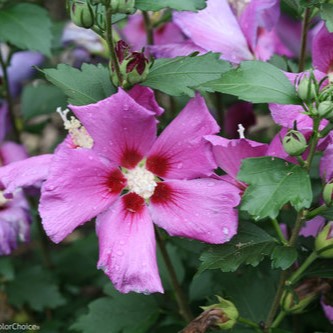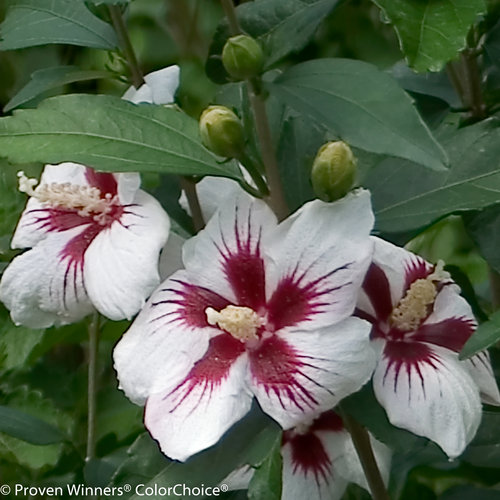Rose of Sharon - The Ultimate Growing Guide from Proven Winners®
For a tropical look, even in cold climates, add rose of Sharon to your yard. This hardy flowering shrub has showy flowers that bloom from midsummer into fall, when most other shrubs are finished for the season.
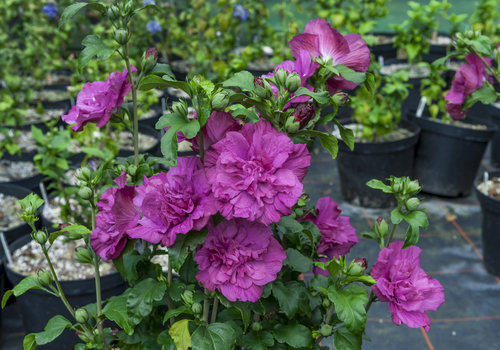 Rose of Sharon is easy to grow, even for beginning gardeners. Hardy in USDA zones 5-9, rose of Sharon bushes are tolerant of a wide range of conditions, including poor soil, heat, humidity, drought and air pollution.
Rose of Sharon is easy to grow, even for beginning gardeners. Hardy in USDA zones 5-9, rose of Sharon bushes are tolerant of a wide range of conditions, including poor soil, heat, humidity, drought and air pollution.
Flower colors include white, red, pink, lavender, blue and bicolors, with single or double forms. Plants have a graceful vase-shaped habit, with small attractive green leaves that are toothed, with no significant fall color.
PLANTING & CARING FOR ROSE OF SHARON
How to plant: Follow these steps to plant rose of Sharon. Space plants 6-10 feet apart, depending on the variety.
- Dig a hole as deep as the root ball and 2 times wider.
- Remove the plant gently from its nursery pot and loosen the soil around the roots.
- Set the plant into the hole with the top of the root ball at soil level or slightly above.
- Back fill the hole with soil and tamp down slightly to remove air pockets. Water well.
- Mulch with a layer of shredded bark to retain moisture and suppress weeds.
Soil: Rose of Sharon aren’t fussy about soil type or pH; any well-drained soil will do.
Watering: Water deeply but less frequently to encourage deep, healthy roots. Rose of Sharon is drought-tolerant once established.
Fertilizing: Fertilize in early spring by applying a granular rose fertilizer according to the label. Reapply each spring.
Pruning: Rose of Sharon needs little to no regular pruning. If you wish to prune, however, late winter or early spring is the best time to do so. Up to one-third of the plant can be removed at a time.
TRY THESE PROVEN WINNERS® VARIETIES
Rose of Sharon comes in a range of flower colors and forms, try these in your garden:
|
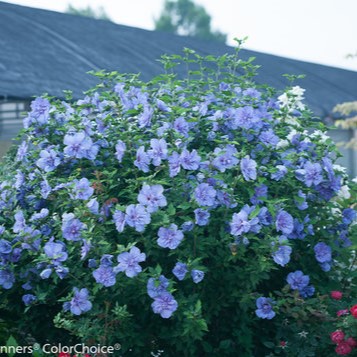 The Chiffon® series is characterized by semi-double powderpuff-like flowers and a soft, graceful habit. Take your pick from five colors: Dark Lavender Chiffon, White Chiffon, Magenta Chiffon, Blue Chiffon, and Pink Chiffon. |
|
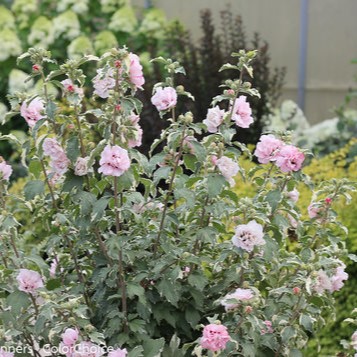 Sugar Tip® offers variegated foliage with creamy margins and blue-green coloring that offsets the double pastel pink blossoms. Use as a stand-alone accent in a container, in a mixed border or foundation planting. |
|
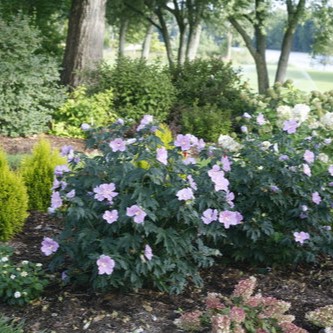 Pollypetite® stays more compact, making it a perfect choice for smaller urban yards. Prolific lavender-pink blooms occur all summer long, standing out against the dark blue-green foliage. Use in containers, in a mixed border or as a stand-alone accent. |
HOW TO USE ROSE OF SHARON IN YOUR LANDSCAPE
This versatile shrub can be used in many ways. Here are some ideas:
- Highlight as an attractive stand-alone specimen
- Use in a foundation planting along with other shrubs
- Plant in the back of a mixed border
- Shear into a hedge for a more formal look
- Use to define different garden rooms
- Train along a fence or trellis in a sunny courtyard
- Grow against the wall of your home or an outbuilding
- Smaller specimens can be planted in containers
Related: How to Grow Hibiscus in Pots
ROSE OF SHARON FAQ’S
Does rose of Sharon need full sun?
Plants will bloom best in full sun, but can tolerate some light shade. Make sure plants receive at least 6 hours of direct sunlight per day.
How big does a rose of Sharon get?
Mature size can range from 6 to 16 feet tall and 2 to 10 feet wide. This fast grower can add up to 2 feet of growth in a single season. If you need something small, try a dwarf variety like Lil' Kim or Pollypetite.
Where is the best place to plant rose of Sharon?
Choose a site that receives at least 6 hours of sun a day, and make sure to leave enough room for plants to mature.
When is the best time to plant rose of Sharon?
It can be planted in either spring or early fall when the weather is cooler.
Are hibiscus and rose of Sharon the same?
What makes Rose of Sharon (Hibiscus syriacus) unique is that they can grow in much colder areas than tropical hibiscus. Plus, unlike perennial hibiscus, they are woody shrubs that persist above ground through winter, with new growth emerging on those same branches in spring.
Learn more about the different types of hibiscus or see our top 10 hibiscus.
Is rose of Sharon invasive?
While not listed as invasive in any states or provinces, they can sometimes spread by seed in urban areas. These have been bred to be "low to no seed" to avoid this problem:
- Sugar Tip®
- Sugar Tip® Gold
- Pollypetite®
- Azurri Blue Satin®
- Orchid Satin®
- Purple Satin®



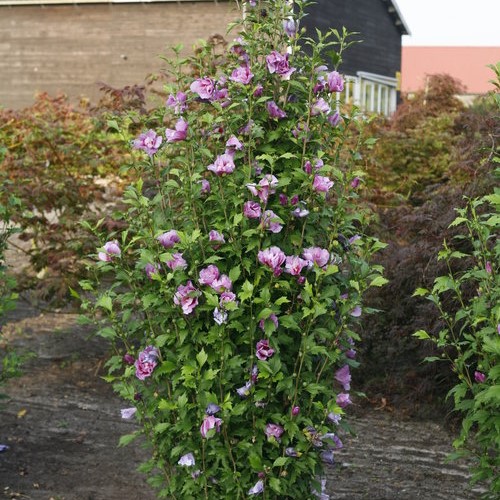 Purple Pillar®
Purple Pillar®